Traditional Poster
Novel Spectroscopy in Traditional Posters
ISMRM & ISMRT Annual Meeting & Exhibition • 10-15 May 2025 • Honolulu, Hawai'i

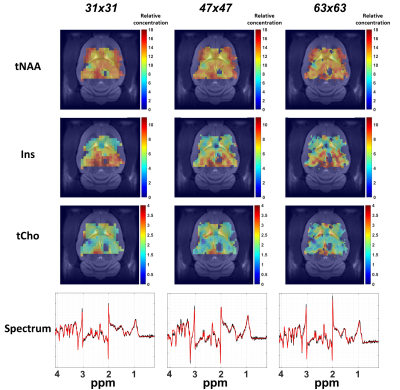 |
5230. High
Resolution in vivo preclinical 1H-FID-MRSI using Compressed
Sensing : when acceleration leads to precipitation
B. Alves, T. Lê, A. Klauser, W. Bogner, B. Lanz, B.
Strasser, C. Cudalbu
Centre d'Imagerie Biomedical - CIBM, Lausanne, Switzerland
Impact: 1H-MRSI
combined with CS could be useful for dynamic measurements
over multiple repetitions. For higher resolution
acquisition, the technique could be more suitable for 3D
whole-brain acquisition or in combination with other
acceleration techniques.
|
|
 |
5231. AI-Powered
Accurate Lipid Segmentation for Lipid Removal from Brain MRSI
Data
Y. Zhang, Z. Ke, W. Jin, R. Liu, D. Wang, W. Zhang, J. Li,
Y. Li, Z-P Liang
University of Illinois at Urbana-Champaign, Urbana, United States
Impact:
The proposed method will significantly improve the robustness of lipid removal and help generate high-quality metabolite maps from brain MRSI data, especially those obtained without lipid suppression. |
|
 |
5232. Differences
in metabolic behavior of liver metastases of colorectal
carcinoma: [18F]FDG-PET vs. DMI at 7T.
L. S. Ho, A. Braat, M. Konig, M. Gosselink, D. Klomp, M.
Lam, J. Prompers
University Medical Center Utrecht, Utrecht, Netherlands
Impact: This study demonstrates that deuterium metabolic
imaging can reveal distinct metabolic features in liver
metastases of colorectal cancer, complementing [18F]FDG-PET
by distinguishing necrotic and active tumor tissue, and thus
providing a promising non-invasive tool for metabolic
assessment in liver metastases.
|
|
| 5233. WITHDRAWN | ||
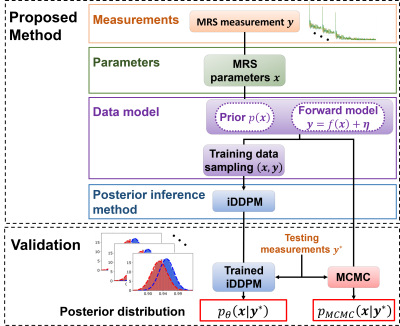 |
5234. Bayesian
posterior estimation for MR spectral quantification using
diffusion probabilistic model
Y. Djebra, J. Ouyang, C. Ma
Yale University, School of Medicine, New Haven, United States
Impact: This study enables fast and reliable MRS
parameters value and uncertainty assessment, significantly
accelerating conventional methods. Patient diagnosis using
this approach could benefit from precise metabolite
assessment with informed margin of error, potentially
broadening MRS clinical utility.
|
|
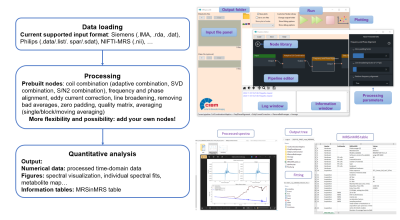 |
5235. Application
of MRspecLAB for MRS/MRSI Data Processing: A Low-Code, and
Highly Flexible GUI Platform
Y. Xiao, A. Kaiser, M. H. J. Kockisch, R. Carlet, Z. Huang,
X. Liu, A. Döring, M. Widmaier, L. Xin
Laboratory for Functional and Metabolic Imaging (LIFMET), Ecole Polytechnique Fédérale de Lausanne (EPFL), Lausanne, Switzerland
Impact:
MRspecLAB shows the large potential for users to easily process both 1H and X-nuclei MRS/MRSI raw data. This collaborative environment also enhances accessibility to MRS/MRSI techniques for various research and clinical applications. |
|
 |
5236. Effect
on spectral quantification of Back-Linear-Predicted and original
first order dephased 1H-FID-MRSI data
A. Siviglia, B. Alves, J. Mosso, C. Cudalbu, B. Lanz
CIBM Center for Biomedical Imaging , Lausanne, Switzerland
Impact: The presented work revealed that with enough
fitting baseline flexibility, FID-MRSI quantification at a
theoretical reconstructed AD=0ms can achieve unbiased
measurements, while it indicated that direct FID-MRSI
quantification at AD≠0ms might generate systematic
estimation offsets.
|
|
 |
5237. Convolutional
Network Based Lineshape Adaptation Improved Subject-Specific
Subspace Estimation for MRSI Reconstruction
R. Zhao, Z. Wang, F. Lam
University of illinois, Urbana Chamapign, Champaign, United States
Impact: The proposed method minimized the discrepancy
between physics-driven subspace and in vivo data, improving
subspace-based MRSI reconstruction and quantification.
|
|
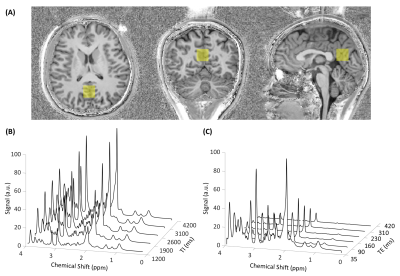 |
5238. Quantification
of T1 and T2 Metabolite Relaxation Times in Healthy Brain at 7T
D. Lai, R. Goldberg, C. Fleischer
Georgia Institute of Technology and Emory University, Atlanta, United States
Impact: T1 and
T2 relaxation
times of brain metabolites were measured at 7T in the same
subjects and scan session. Previously unreported relaxation
times were quantified for several metabolites, which are
useful for optimizing acquisition parameters and quantifying
absolute metabolite concentrations.
|
|
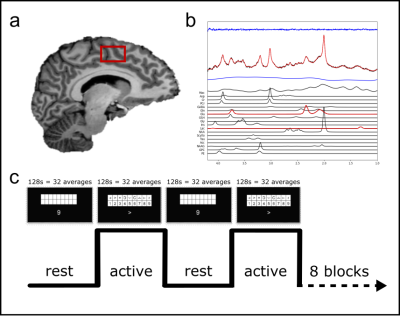 |
5239. Functional
Magnetic Resonance Spectroscopy at 7 Tesla: Examining Glutamate
& Lactate Dynamics during Processing Speed
A. Kaiser, Y. Xiao, M. Widmaier, L. Xin
CIBM Center for Biomedical Imaging, École polytechnique fédérale de Lausanne (EPFL), Lausanne, Switzerland
Impact: Our findings highlight the potential of fMRS to
detect dynamic neurochemical changes during cognitive tasks,
offering valuable insights for understanding cognitive
processing and decline. This could have profound
implications for neuroscience and psychiatric research in
diagnosing cognitive disorders.
|
|
 |
5240. Cryogenic
RF coil versus higher magnetic field strength for 1H fast
FID-MRSI in the rat brain
T. P. Lê, B. Alves, J. Mosso, B. Lanz, C. Cudalbu
CIBM Center for Biomedical Imaging, Lausanne, Switzerland
Impact: High quality metabolite quantification and
mapping with fast 1H
FID-MRSI is achieved in the rat brain benefiting from either
the unmatched sensitivity of cryogenic coils at 9.4T, or
enhanced spectral resolution at 14.1T.
|
|
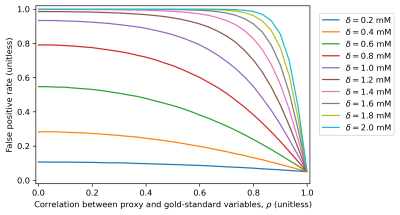 |
5241. The
consequences of statistical tests on proxy variables, an
application to short-TE as an estimation for MEGA-edited GABA
K. Landheer, M. Treacy, C. Juchem
Regeneron Genetics Center, Tarrytown, United States
Impact: The false negative and false positive rate can
be markedly inflated when using short-TE MRS to estimate
metabolites such as gamma-aminobutyric acid. This calls for
increased caution in interpreting results, and the
accommodation of these effects when designing statistical
analyses.
|
|
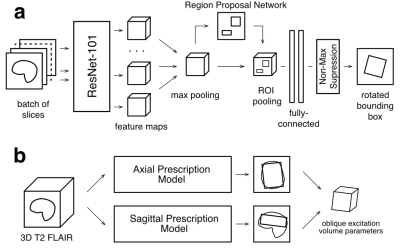 |
5242. Oriented
Object Detection Deep Learning Model for Automated Prescription
of 3D MR Spectroscopic Imaging of the Brain
E. Ozhinsky, J. Ellison, T. Luks, J. Lupo, Y. Li
University of California San Francisco, San Francisco, United States
Impact: This study demonstrates the feasibility of a
machine learning-based automated prescription of 3D MRSI
acquisition of the brain. This would help solve a major
challenge of incorporating metabolic imaging into the
routine clinical care of patients with brain tumors.
|
|
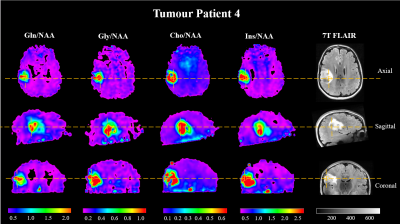 |
5243. Quantitative
validation of 7T MRSI in gliomas by targeted mass spectrometry
S. Acharya, C. Cadrien, S. Huskic, P. Lazen, A. Azgin, C.
Brenner, J. Furtner, B. Kiesel, L. Koerner, M. Preusser, T.
Roetzer-Pejrimovsky, G. Köllensperger, S. Trattnig, W.
Bogner, G. Widhalm, K. Rössler, G. Hangel
High-field MR Center, Department of Biomedical Imaging and Image-guided Therapy, Medical University of Vienna, Vienna, Austria, Vienna, Austria
Impact: Using 7T MRSI maps to sample metabolic hotspots
allowed us to compare MRSI findings with histological and
quantitative features. We demonstrated that combining MRSI
and MS offers a more comprehensive metabolic profile of
gliomas with room for improvement.
|
|
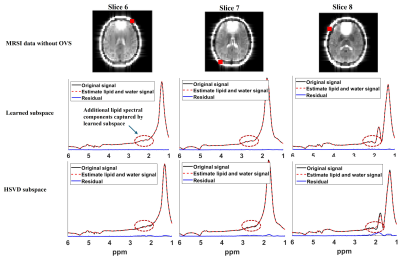 |
5244. Improved
Nuisance Signal Removal for 3D 1H-MRSI Using Physics-Driven
Subspace Learning
X. Li, Z. Wang, Y. Wang, F. Lam
University of Illinois at Urbana-Champaign, Urbana, United States
Impact:
The proposed method can potentially accelerate the data acquisition time and improve the nuisance removal outcome in 3D 1H-MRSI without lipid suppression. |
|
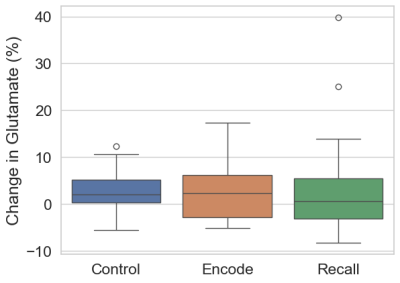 |
5245. Optimization
of a mixed block and event-related fMRS acquisition protocol for
a working-memory task at 7T
D. Cocking, R. Elson, K. Dyke, M. Katshu, C. Danielmeier, A.
Berrington
University of Nottingham, Nottingham, United Kingdom
Impact: This
study validates that TE=80ms semi-LASER improves GABA and
Glu detection and offers a mixed-design fMRS protocol for
cognitive studies. This opens the possibility to study
temporal dynamics of glutamate during a working memory task.
|
|
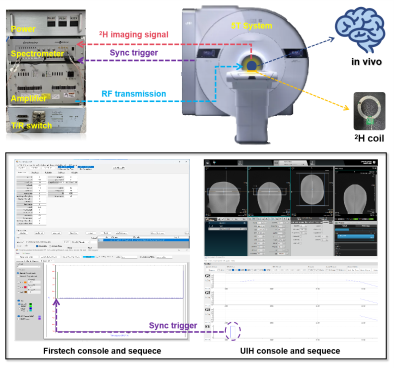 |
5246. Deuterium
metabolic spectroscopy and imaging in human at 5T MR system:
preliminary study
L. Zou, G. Yang, Q. Wan, X. Yang, H. Zheng, Y. Li, X. Liu
Shenzhen Institute of Advanced Technology, Chinese Academy of Sciences, Shenzhen, China
Impact:
This is the first deuterium MRS/MRSI work at a human 5T system, using a home-built multi-nuclei imaging platform. The feasibility of deuterium MRS/MRSI at 5T for clinical applications was successfully validated through in vivo human studies. |
|
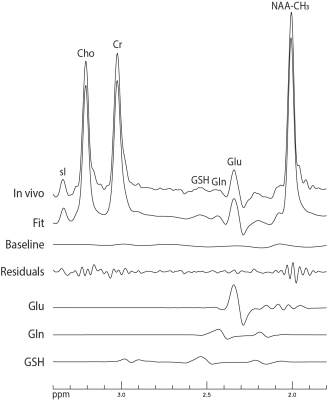 |
5247. In
Vivo Detection of Glutamate, Glutamine, and Glutathione at 3 T
via Difference Editing of Aspartyl Resonances
L. An, S. Hong, T. Turon, A. Pavletic, C. Johnson, J. Shen
National Institutes of Health, Bethesda, United States
Impact: Time-course
spectra following oral administration of [U-13C]glucose
demonstrate, for the first time, the feasibility of
measuring 13C
turnover of spectrally resolved glutamate at 3 T with the
high sensitivity and spatial resolution of proton MRS.
|
The International Society for Magnetic Resonance in Medicine is accredited by the Accreditation Council for Continuing Medical Education to provide continuing medical education for physicians.